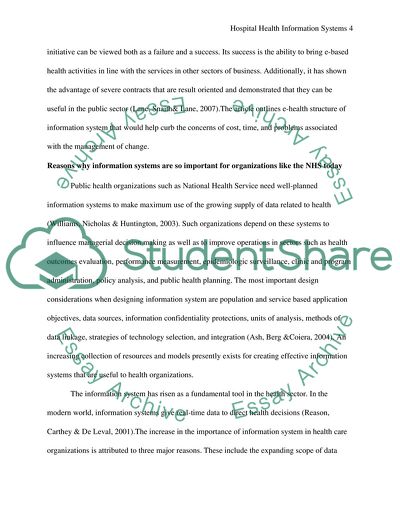Cite this document
(Hospital Health Information Systems: Are Failures Problems of the Past Coursework Example | Topics and Well Written Essays - 2000 words, n.d.)
Hospital Health Information Systems: Are Failures Problems of the Past Coursework Example | Topics and Well Written Essays - 2000 words. https://studentshare.org/health-sciences-medicine/1875858-hospital-information-systems-are-failures-problems-of-the-past
Hospital Health Information Systems: Are Failures Problems of the Past Coursework Example | Topics and Well Written Essays - 2000 words. https://studentshare.org/health-sciences-medicine/1875858-hospital-information-systems-are-failures-problems-of-the-past
(Hospital Health Information Systems: Are Failures Problems of the Past Coursework Example | Topics and Well Written Essays - 2000 Words)
Hospital Health Information Systems: Are Failures Problems of the Past Coursework Example | Topics and Well Written Essays - 2000 Words. https://studentshare.org/health-sciences-medicine/1875858-hospital-information-systems-are-failures-problems-of-the-past.
Hospital Health Information Systems: Are Failures Problems of the Past Coursework Example | Topics and Well Written Essays - 2000 Words. https://studentshare.org/health-sciences-medicine/1875858-hospital-information-systems-are-failures-problems-of-the-past.
“Hospital Health Information Systems: Are Failures Problems of the Past Coursework Example | Topics and Well Written Essays - 2000 Words”. https://studentshare.org/health-sciences-medicine/1875858-hospital-information-systems-are-failures-problems-of-the-past.


